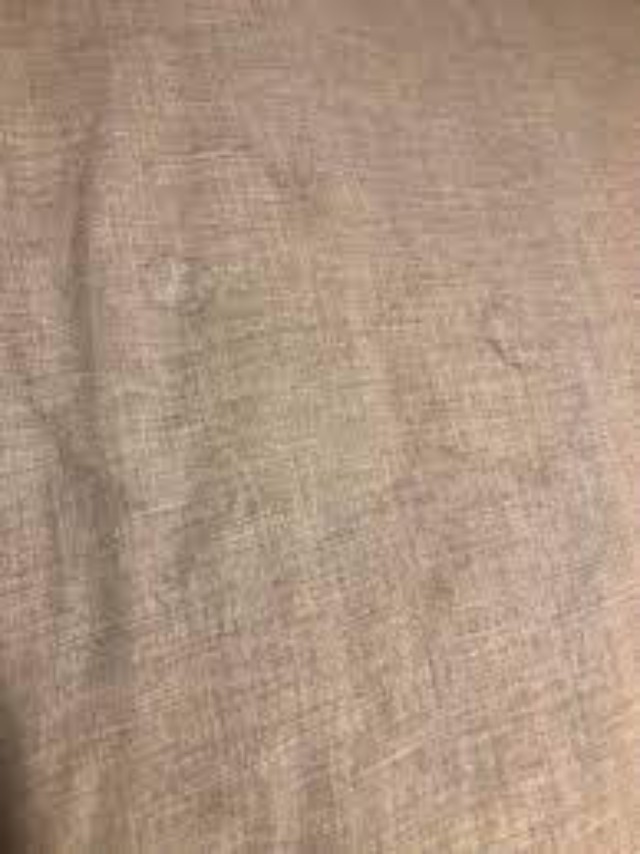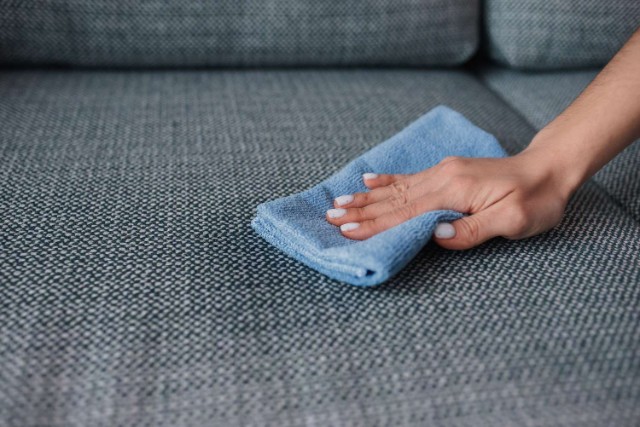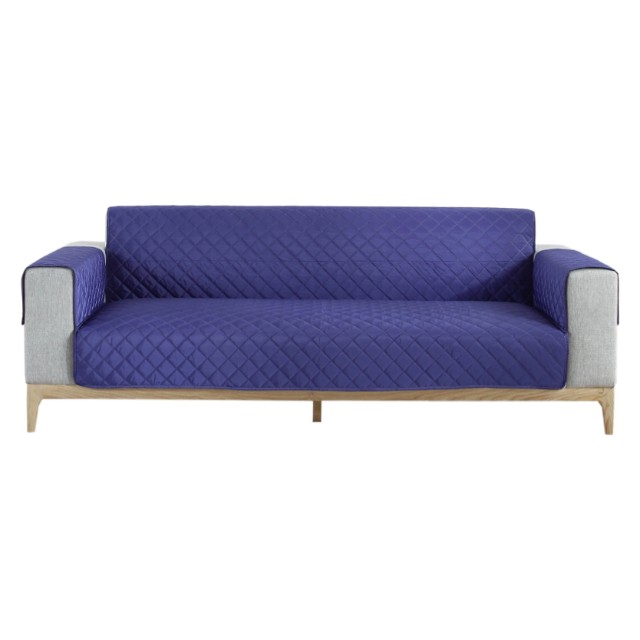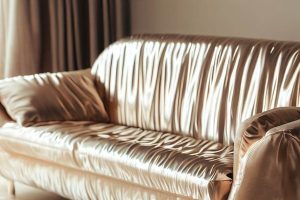As I gaze upon my beloved fabric sofa, I’m reminded of the many times it has been a comfort and refuge over the years. With its soft texture and inviting color, it is one of the most cherished pieces in my home.
Unfortunately, water stains can mar this beauty – but do not despair! With a few simple tips and techniques from Nousdecor, I will show you How To Remove Water Stains From Fabric Sofa so that you can enjoy it for years to come.
Key Takeaways
- Create a cleaning solution with baking soda, warm water, laundry detergent, and white vinegar.
- Test the solution on an inconspicuous area of the fabric before applying it to the stain.
- Blot the stain using a cloth or paper towel in an outward motion to prevent spreading.
- Absorb moisture from the fabric by gently dabbing with a clean cloth and using a vacuum cleaner attachment.

How To Remove Water Stains From Fabric Sofa
Removing water stains from a fabric sofa can be a tricky task, but it is doable with the right knowledge.
To start, mix a cleaning solution of one part white vinegar and two parts warm water in a spray bottle. Then, test this on an inconspicuous spot to make sure it won’t damage the fabric.
After confirming that the cleaning solution is safe, spray it directly onto the stain before blotting up as much liquid as possible with a cloth or paper towels. Next, use another cloth to absorb any remaining moisture and let the area air dry completely.
With these steps, you can get your fabric sofa looking like new again! Unless your sofa is suffering from ink stains, check out our guide on ink stain removal from fabric sofa instead!
Mixing Cleaning Solution
Mixing the right cleaning solution is key for cleaning a fabric sofa without water. Here’s how to create a mixture that won’t damage your couch:
- Start by making a paste of baking soda and warm water.
- Mix in laundry detergent, using enough to make it somewhat sudsy.
- Add white vinegar in small increments until you have the desired consistency.
- Test this on an inconspicuous area of the sofa first, then adjust as needed.
This blend should be applied carefully with a soft cloth or sponge, scrubbing gently in circles until the stain has disappeared. And if done correctly, you’ll be ready to move onto step two: testing a spot!
Test a Spot
Once you’ve mixed the cleaning solution, it’s time to test a spot on your couch. Before applying the solution directly to the fabric, use an inconspicuous area of the upholstery like under a cushion or beneath an armrest.
Put a small amount of the cleaner onto a white cloth and dab it onto the fabric. If there is no discoloration after 30 minutes, then you can safely move forward with using it on the stain.
Be sure to read all instructions carefully before proceeding to be sure that none of your fabrics are damaged by any ingredients in your cleaning solution.
Once you’re certain that your cleaner won’t damage your furniture, it’s time to move on to blotting out the stain.

Blot the Stain
Now that you’ve tested the solution, it’s time to start blotting out the stain. Use a cloth or paper towel to apply pressure and absorb moisture from the stain. Move in an outward motion to prevent further spreading. You can also use a vacuum cleaner attachment if necessary.
| Tool | Blotting Pressure | Absorb Moisture |
|---|---|---|
| Cloth or Paper Towel | Light-Medium | Yes |
| Vacuum Cleaner Attachment | Medium | Yes |
Be meticulous and pay attention when using either of these tools, as it could cause damage if used too harshly on delicate fabrics. If you’re unsure, consult a professional before proceeding with treatment.
With patience and care, you’ll be able to remove water stains from your fabric sofa without further damaging it.
Now let’s move onto absorbing moisture from the stain.
Absorb Moisture
Using a cloth or vacuum cleaner attachment, you’ll need to absorb the moisture from the stain. Here are some tips for fabric sofa cleaning:
- Gently dab at the damp area with a clean microfiber cloth.
- Start from the outside and work your way inwards, being sure to not spread any of the stain further.
- Focus on absorbing as much moisture as possible.
Vacuuming can also be effective at removing moisture:
- Utilize an upholstery cleaning attachment on your vacuum.
- Go over the area several times, making sure you cover all parts of the stain evenly.
- Make sure to pull out trapped dirt and debris that may have been absorbed into the material’s fibers.
Once all of the moisture has been removed, it’s time to dry the fabric and finish off this process.
Dry the Fabric
After absorbing all the moisture, it’s time to dry the fabric as this is one of the best sofa cleaning practices. Using a cloth or paper towel, dab the area gently until no further moisture can be absorbed.
If possible, use an air blower such as a hairdryer to blow-dry the affected area in short bursts at medium heat. However, if this is not available, let the fabric naturally air-dry; make sure you turn it over first so that both sides of the fabric are exposed to airflow.
Avoid using any chemical products on natural fabrics as this may cause damage and discoloration. Once you’re done drying your sofa fabric, it’s important to take steps to prevent water stains from developing again in future.
Tips for Preventing Water Stains
To prevent water stains, always blot up spills as soon as they occur. Here are some tips for removing sofa water marks: If the fabric is wet and you’re unable to clean it right away, use a paper towel or cloth to soak up the excess liquid before it can penetrate the fibers.
Try not to rub too hard, as this could cause the stain to spread further. Avoid using any cleaning products that contain harsh chemicals on your sofa; these may leave behind residue that could attract more dirt and grime.
Cover areas of your couch with waterproof covers or protectors when possible to reduce exposure to liquids. If you have small children or pets in your home, consider placing throws over vulnerable areas for added protection.
Finally, be sure that each member of your household knows how important it is not to track water onto the furniture from outside sources such as puddles or rainwater on shoes.
Taking these steps can help keep your sofa looking fresh and free of unsightly water stains. With a little bit of effort and care, you’ll be able to enjoy its beauty for years to come!
Moving on from prevention measures, lemon juice can be used effectively in removing couch water stains caused by everyday wear-and-tear.

Use Lemon Juice to Remove Couch Water Stains
Lemon juice can be your go-to solution for tackling couch water stains, so don’t hesitate to give it a try! Here are some tips for using lemon juice as a cleaner:
- Dilute the lemon juice with equal parts of water to avoid any bleaching effects on your fabric sofa.
- Apply the diluted lemon juice directly onto the stain and leave it to sit for up to 15 minutes.
- Use a soft cloth or sponge to blot the area until the stain is removed from your sofa’s fabric.
With its natural acidity, lemon juice is an effective way of removing stubborn water stains from fabric couches without damaging them in any way. Make sure you test it out on an inconspicuous area first before applying it more broadly, just in case!
Now everything is done, you can start decorating and enjoy our fabric couch to the fullest now! Check out our article How To Paint A Fabric Sofa for some stylish fabric sofa designs!
Frequently Asked Questions
Conclusion
Removing water stains from fabric sofas can seem like an impossible task, but with the right tips and tricks, it doesn’t have to be!
By following our guide, you’ll be able to remove those pesky water stains in no time. Plus, with our prevention tips you won’t have to worry about water stains ever again – it’s like magic!
So don’t let those nasty little spots ruin your furniture any longer, get rid of them quickly and easily today. You’ll be amazed at how easy it is – trust us!
Interested in getting a new couch? Check out our best sofa designs now and decide your own!


![Daybed vs Sofa Bed: Which Lounger Is Better? [2024]](https://nousdecor.com/wp-content/uploads/2021/06/Daybed-vs-Sofa-Bed-300x217.jpg)



